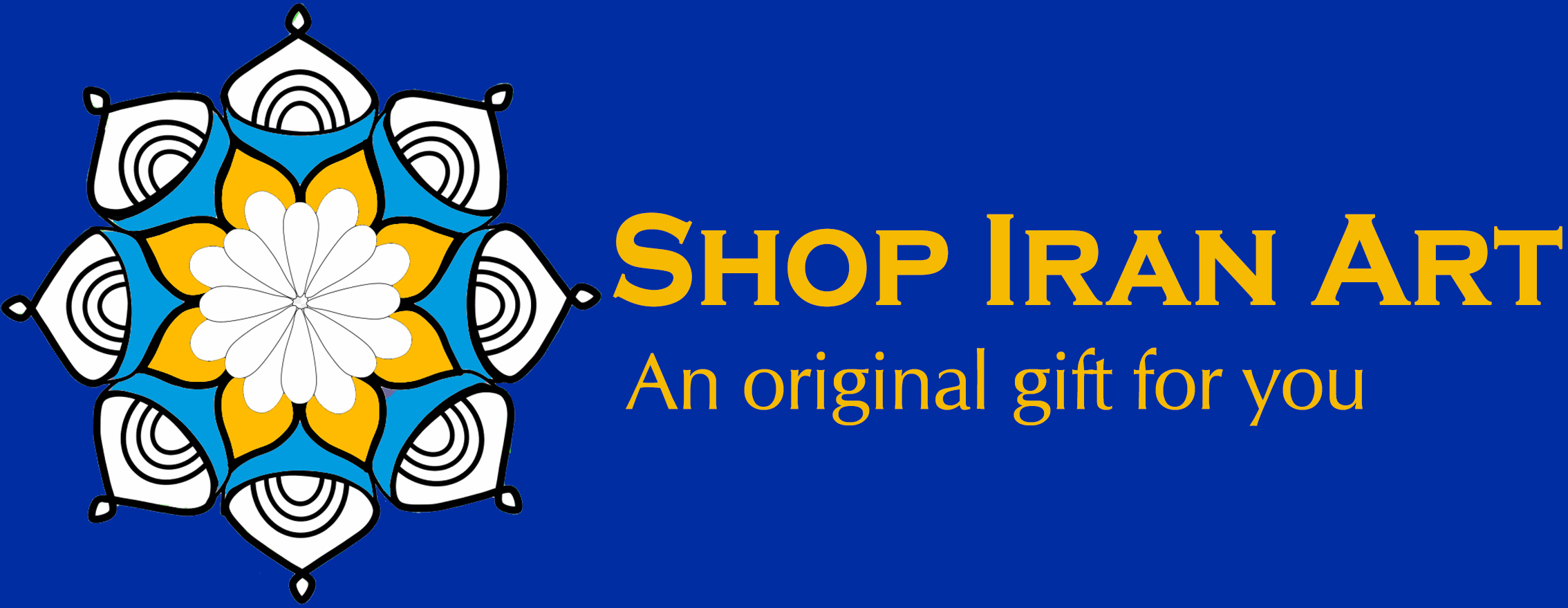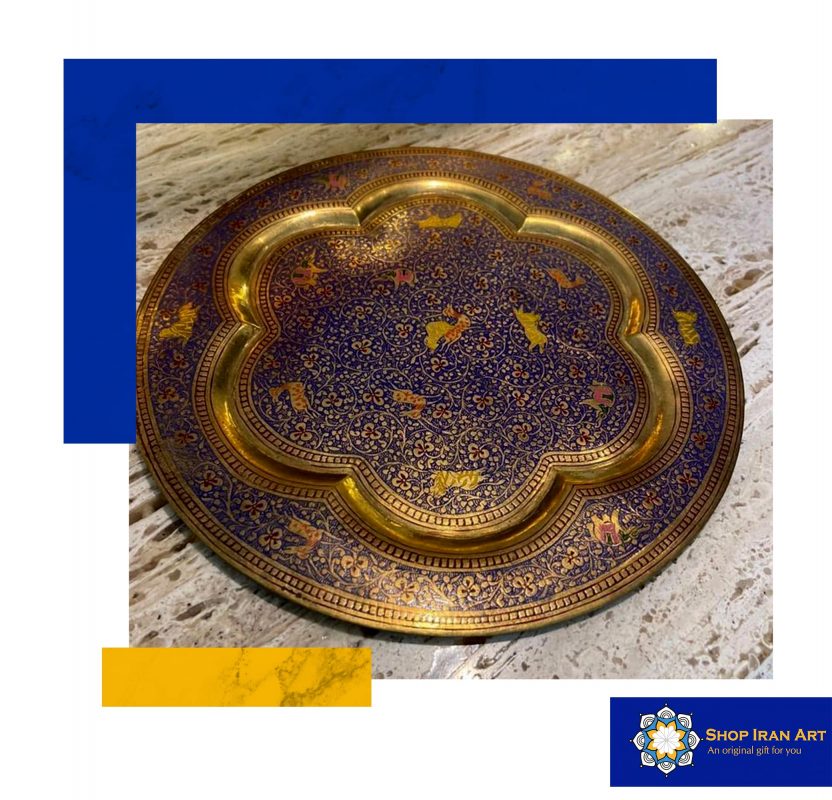Sin categorizar
Meenakari Handicraft Manufacturers
Meenakari Handicraft Manufacturers
In a world that often seems overwhelmed by technology and the pace of mass production, there is one area where the hands of skilled artisans infuse ancient traditions. Meenakari is a shining example of art, skill and heritage among these handicraft treasures. The Meenakari craft has captivated connoisseurs for centuries with its vibrant colours, intricate designs, and exquisite craftsmanship.
History and Evolution of Meenakari Handicrafts
Travel back in time and witness the journey into the fascinating world of Meenakari unfolds in front of you. The Meenakari craft’s centuries-long evolution presents a story of cross-cultural interaction, artistic mastery, and surviving traditions. Discover how this incredible art form evolved, changed, and thrived, leaving a lasting mark on Rajasthani, Indian, and worldwide cultures.
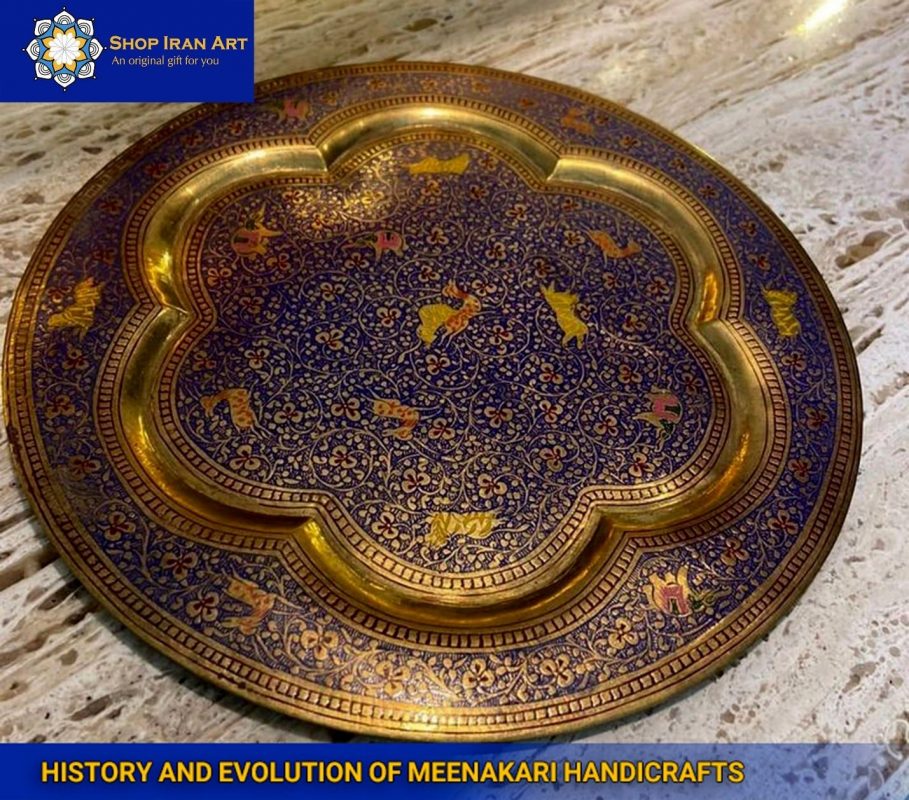
Origins in Ancient Persia
The roots of Meenakari can be traced back to ancient Persia (modern-day Iran) during the Sassanian era. Persian artisans perfected the art of enamelling, which involved fusing vibrant colours onto metal surfaces. This artistic technique travelled across the Silk Road, eventually finding its way to the princely courts of Rajasthan.
Flourishing Under Rajput Patronage
During the 16th century, Meenakari artisans found a new home in the princely states of Rajasthan, where they received patronage from Rajput rulers. These rulers, known for their love of art and grandeur, encouraged and supported Meenakari artisans, allowing the craft to thrive. Meenakari adorned palaces, forts, and regal jewellery, becoming an integral part of Rajput culture.
The Fusion of Mughal Influence
The Mughal Empire’s arrival in India during the 16th century significantly shifted Meenakari’s evolution. Mughal emperors, such as Akbar the Great, embraced Meenakari, integrating Persian and Central Asian motifs into the traditional Rajasthani style. The union of these influences gave rise to a distinct Mughal-Meenakari style that adorned Mughal architecture and jewellery.
Meenakari Handicraft Manufacturing Hubs
The Meenakari technique is brought to life in central Rajasthan, India’s dynamic cultural heartland. These manufacturing centres are the thriving heart of Meenakari handicrafts, nurturing creative artisans and preserving this exciting art form’s long-standing conventions. Join us as we tour the renowned Meenakari craft production plant and learn about the unique qualities, abilities, and contributions that distinguish each craft.
Jaipur: The Jewel of Meenakari
As the capital city of Rajasthan, Jaipur stands tall as a beacon of Meenakari excellence. Renowned for its splendid palaces and opulent jewellery, Jaipur houses numerous workshops where Meenakari artisans hone their skills. The city’s rich history, vibrant bazaars, and royal patronage have nurtured a thriving community of craftsmen who create intricate Meenakari jewellery, home decor, and ceremonial artefacts.
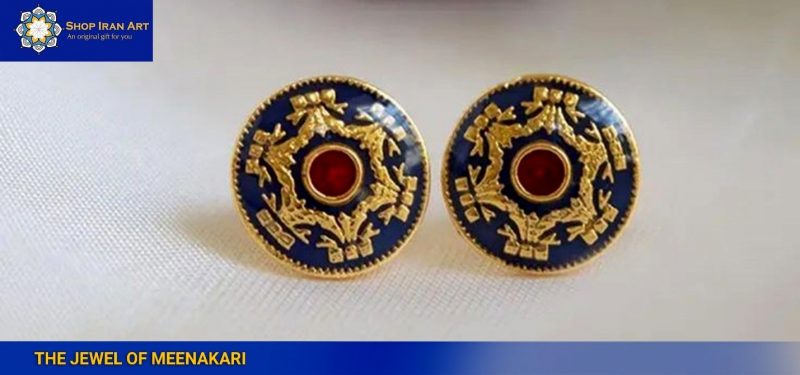
Bikaner: A Tapestry of Tradition
Located in the northwestern region of Rajasthan, Bikaner has a heritage inherited from Minakali. The palaces and havelis of the city bear witness to the magnificent Meenakari work that has flourished here for centuries. Bikaner artisans specialize in intricate Meenakari jewellery, especially the famous Kundan Meenakari, which combines Meenakari enamel with precious stones set in gold.
Udaipur: Where Royalty Resides
Udaipur, known as the City of Lakes, exudes an ethereal charm that extends to its Meenakari handicrafts. This picturesque city has long been a centre for royal patronage, with the Mewar dynasty nurturing the art of Meenakari. Udaipur’s artisans excel in crafting ornate Meenakari artefacts, including elaborate silverware, decorative trays, and intricately enamelled miniature paintings.
Traditional Meenakari Designs and Patterns
Immerse yourself in the world of Meenakari, where designs and patterns come alive with vibrant hues and intricate details. Traditional Meenakari is a treasure trove of symbolic motifs, cultural expressions and artistic flair. Discover the fascinating designs and patterns that adorn Meenakari jewellery, home decor and handicrafts, revealing their meaning, significance and cultural heritage.
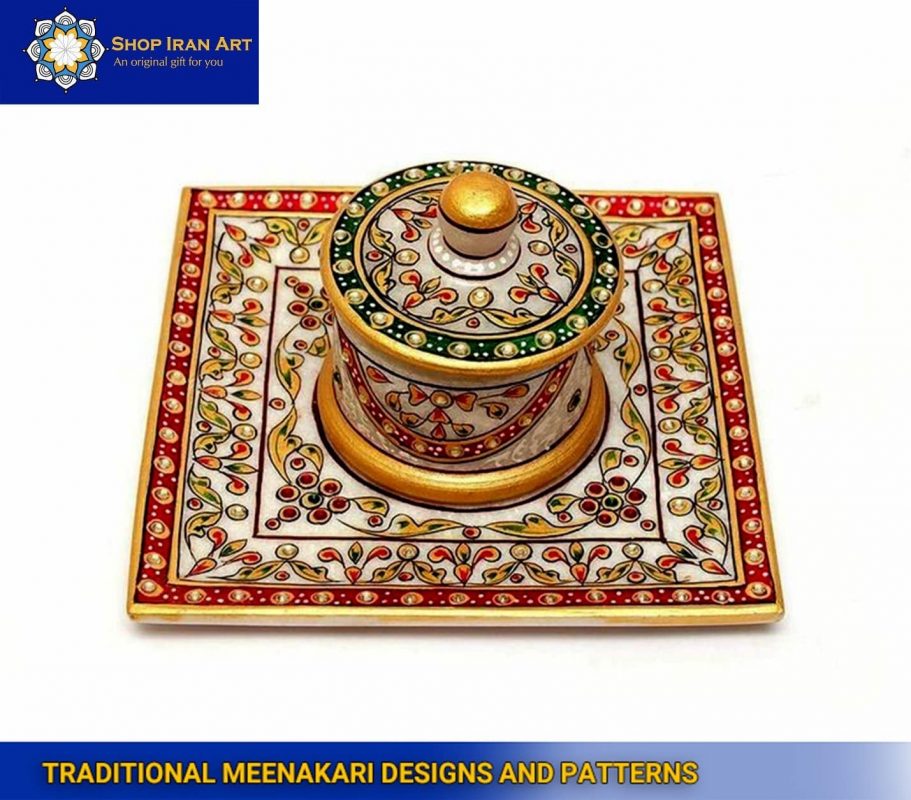
Floral Splendor
The Flowers in Meenakari designs symbolise beauty, fertility, and prosperity. Delicate blossoms such as lotus, rose, jasmine and marigold are intricately rendered, infusing Meenakari creations with grace and elegance. The floral motifs, often combined with leaves and vines, evoke a sense of harmony with nature and the cycle of life.
Mythological Motifs
Meenakari designs are often inspired by Indian mythology and depict gods, deities and legendary figures. Idols of Gods and Goddesses like Krishna, Radha, Ganesha and Lakshmi are adorned with Meenakari enamel to revive the spiritual essence. These designs embody the trust and reverence associated with religious beliefs.
Geometric Precision
Meenakari’s geometric patterns demonstrate his precision and attention to detail. These designs commonly use symmetrical combinations of squares, circles, triangles, and hexagons to create pleasing visual patterns. Geometric designs symbolize harmony, balance, and order in the cosmos and demonstrate a profound understanding of sacred geometry.
Challenges and Opportunities for Meenakari Handicraft Manufacturers
While Meenakari handicrafts continue to captivate art enthusiasts around the world, the artisans and manufacturers face a unique set of challenges and opportunities in preserving this age-old craft. From adapting to changing market dynamics to keeping traditional techniques, Meenakari handicraft manufacturers navigate a delicate balance between heritage and innovation. Explore the challenges they encounter and the opportunities for the sustainability and growth of this exquisite art form.
Global Market Competition
In an increasingly globalized world, Meenakari handcraft manufacturers face tough competition from mass-produced, machine-made goods. It was challenging to discern Meenakari’s distinctive and handmade quality from its mass-produced competitors and convince clients of the detailed creativity. Manufacturers must examine cutting-edge marketing tactics, collaborations, and global campaigns to establish Meenakari in a niche in the worldwide market.
Shifting Consumer Preferences
Changing consumer preferences and evolving design trends pose challenges and opportunities for Meenakari manufacturers. While traditional designs hold timeless appeal, there is also a growing demand for contemporary and fusion designs that cater to diverse tastes. Manufacturers must balance preserving traditional techniques and embracing innovative designs to attract a broader consumer base.
Discover a wide selection of authentic Meenakari handicrafts and support skilled artisans at Shop Iran Art, your destination for exquisite traditional Indian crafts.
Conclusion
While Meenakari manufacturers face hurdles in a fast-paced, globalized world, they also possess the ingenuity to adapt and thrive. By embracing innovation, nurturing traditional techniques, and fostering artisan empowerment, they can ensure the continuity and growth of Meenakari for future generations to appreciate.
What materials are commonly used in Meenakari handicrafts?
Meenakari handicrafts primarily use metals like gold, silver, and copper as the base, then embellished with vibrant enamel colours.
How is Meenakari different from Kundan jewellery?
Meenakari involves the intricate art of enamelling, while Kundan jewellery uses gemstones set in gold to create elaborate designs.
Are Meenakari handicrafts only limited to jewellery?
No, Meenakari is also extensively used to craft decorative items like vases, trays, bowls and architectural elements like wall panels and murals.

